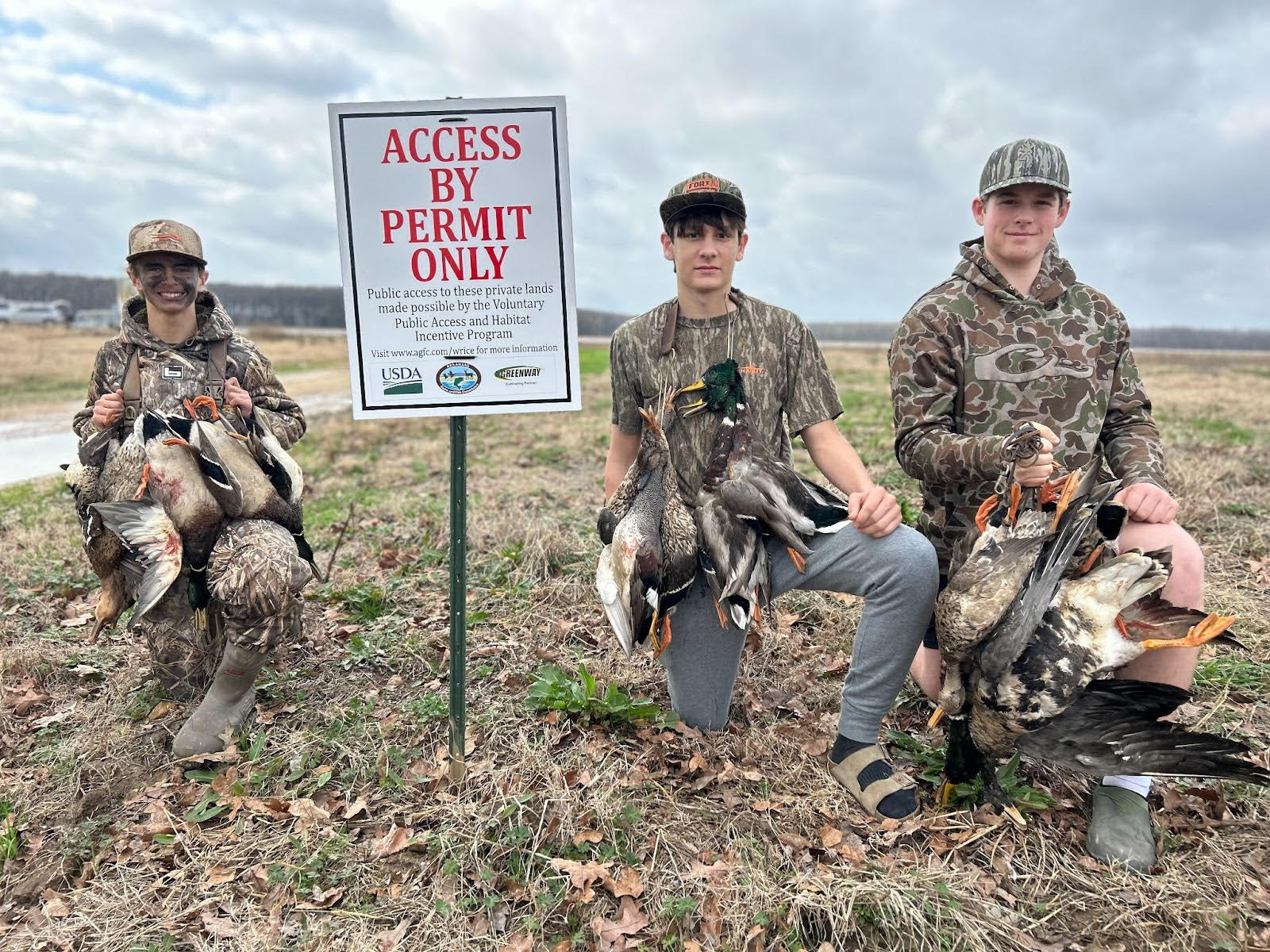Fish kills natural summer phenomenon on small waters
ON 07-10-2024

LITTLE ROCK – Anyone who has ever had their breath taken away after sitting in a car that’s been parked in the summer sun will tell you that even a momentary drop in oxygen can turn things upside down. The same holds true for fish if the dissolved oxygen in a pond or lake crashes.
According to Eric Brinkman, Assistant Chief of Fisheries for the Arkansas Game and Fish Commission, fish kills associated with low oxygen levels can be common in many small bodies of water during summer.
“It can happen on any body of water or a section of a body of water, but the most common places we get fish kills like this are smaller ponds on people’s property,” Brinkman said.
Brinkman says the factors leading up to a fish kill because of low oxygen are more complex than the simple fact that hot water holds less oxygen.
Life Overload
“There’s a lot going on in summer,” Brinkman said. “Fish are cold-blooded creatures, so their metabolism rises with the temperature. A higher metabolism means more activity and more oxygen demand.”
The amount of life in the system also is at its peak. Fish and insects that hatched all spring add more demand for the dissolved oxygen available.
“Summer also brings an abundance of vegetation, phytoplankton and zooplankton,” Brinkman said. “Which all use oxygen as well.”
It’s common knowledge that plants provide oxygen when they create sugars through photosynthesis, but few people realize those same plants use part of that oxygen when they use those stored sugars to survive.
“An abundance of fish, insects and plankton can consume a lot of dissolved oxygen, especially at night or during prolonged periods of cloudy weather, when photosynthesis slows due to lack of sunlight,” Brinkman said.

Many fish kills associated with this sort of oxygen depletion occur in the very early morning, when oxygen levels are at their lowest, but they may happen at any time of day if cloud cover has prevented photosynthesis for multiple days.
In the case of a recent fish kill on Lake Conway, the primary culprit likely was low oxygen as a result of this overabundance of fish and vegetation.
“The fish that once occupied nearly 6,000 acres of water are now sharing 2,000 acres, so oxygen is at a premium,” Nick Feltz, fisheries supervisor at the AGFC’s Mayflower Office, said. “This was inevitable and is one of the reasons we lifted the limits on fishing since the announcement of the drawdown last year. Most of the fish we’ve seen affected by this fish kill were drum, yellow bass and other rough fish, but a few largemouth bass, crappie and catfish have been seen as well.”
Feltz says he expects to have additional natural fish kills on portions of Lake Conway throughout the drawdown.
“This was by no means a complete kill, and there are a lot of fish still in the lake,” Feltz said. “It’s entirely possible to have additional fish kills until the amount of fish in the lake matches the new water level available.”
One Bad Turn(over)
Fish kills resulting from low oxygen also can happen during sudden events called “turnover.”
During the hottest part of summer, water will form two distinct layers. The upper layer will be warmer and contain most of the oxygen. The bottom layer will be cold, and contains little or no oxygen. Most fish will be in the upper layer of the water column, often very close to where the two sections meet – called the thermocline.
A cool rain or extreme cold front can cool the surface layer too rapidly, causing it to drop to the bottom of the pond. This forces the oxygen-poor layer to the surface where the fish are holding. The rapid drop in oxygen causes large fish kills.
No matter the cause of oxygen loss, the best solution is aeration.
“Oxygen diffuses into the water from the surface quicker if there’s a lot of splashing and wave action,” Brinkman said. “On our hatcheries and on many farms with the proper equipment, a paddle-wheel aerator will get oxygen back into the system efficiently. A lower-cost option for ponds and small lakes is an aeration fountain to cause an adequate disturbance.”
Brinkman says once fish begin to go belly up, there’s not much that can be done, but investing in aeration definitely guards against oxygen loss and helps prevent the water from stratifying. Manually aerating large lakes isn’t possible due to the extremely large volume of water to be aerated.
Another piece of advice for would-be pond owners is to limit the maximum depth of any small pond you build to less than 10 to 12 feet. Shallower systems do not stratify or turnover as easily.
“Many people think you should have some deeper water for fish to use as refuge during the hot summer months, but it’s actually a bad idea when you’re talking about smaller ponds,” Brinkman said.

Too Fertile?
Anything that adds nutrients to the system during summer also can increase the demand for oxygen. Overabundant fertilization, runoff from agriculture or sewage treatment areas and livestock waste all can increase the fertility of the system too much and eventually lead to a crash.
Telltale indicators that you may have a turnover occurring on a pond are an overnight change in the water color from relatively clear to a “chocolate milk” appearance, a foul, rotting smell and fish opening their mouths, or “piping,” at the surface of the water. These symptoms are much more prevalent in the morning just as the sun rises.
If a person sees a fish kill, they can call their local AGFC office and ask to speak to a fisheries biologist. They can walk you through a series of questions to determine whether the kill is due to oxygen depletion or if other factors are at play. A list of regional offices is available at https://www.agfc.com/about-
Recent News

Contenders take aim as shooting sports regionals begin
Apr. 23, 2025

Teens turn duck season around in youth WRICE hunt
Apr. 23, 2025
Subscribe to Our Weekly Newsletter E-mails
Don’t miss another issue. Sign up now to receive the AGFC Wildlife Weekly Newsletter in your mailbox every Wednesday afternoon (Waterfowl Reports are published weekly during waterfowl season and periodically outside the season). Fishing Reports arrive on Thursdays. Fill in the following fields and hit submit. Thanks, and welcome!
